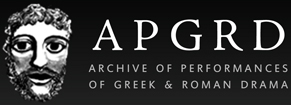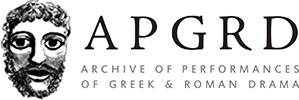Since its earliest days, the cinema has been gripped by a fascination with the classics. In 1900, the English director Walter Booth filmed the silent Last Days of Pompeii. And in 1907 the first cinematic version of Ben Hur was filmed on the sands of Manhattan Beach in Los Angeles, where the very act of going to the cinema was invested with classical significance. The power of cinematic projections gained an early association with ancient divinity and scores of theatres took the name of the god of light, Apollo. Throughout early twentieth-century Hollywood, film production and exhibition environments used kitsch decorations and mythological references to present moviegoing as the modern reconfiguration of ancient ritual.
The limits of representation
The ancients have had an even greater impact onscreen. Adaptations of classical myth and theatre have built a pervasive image of “the ancient world” that is as much a product of imaginative Hollywood production design as it is a recovery of the remains of Greece and Rome. For many, the cinema provided their first and most lasting visual encounter with the ancient world, so a study of the visual vocabulary of cinematic representation is essential for twentieth-century classical reception.
Cinema’s obsession with classical texts has continued in the twenty-first century with a broad interest in using mythology as a vehicle to dramatise the progression of cinema’s technical possibilities. Contemporary cinema, as much as any chapter in art history, is keen to find and push its own limits of representation, and our oldest stories have been the preferred way to demonstrate the spectacle enabled by our newest technologies.
Since 2000, the number of films with an interest in antiquity has surged. Films like Ridley Scott’s Gladiator (2000) and Wolfgang Petersen’s Troy (2004) strive to present the viewer with a spectral image of an epic past. Ancient tragedy, on the other hand, finds a cinematic outlet in adaptations set in the present day such as Cassandra’s Dream by Woody Allen (2007). Werner Herzog’s 2009 film My Son, My Son, What Have Ye Done? dramatises classical reception itself as a destabilising and violent act.
Expanded considerations
In addition to films that overtly deal with antiquity, there is also a cinematic tradition of filmmaking that has a different kind of recourse to the classics. Outside of Hollywood, the classics have served as a common platform to excavate contemporary life. For example, Italian auteurs Fellini, Antonioni and Pasolini use montage that mimics the fragmentation of incomplete classical texts to dramatize the fragmented nature of human relationships.
The expansion of interest in classical reception and the burgeoning growth of the academic study of film continue to necessitate further consideration of the evolving relationship between these two disciplines.
Further Reading
The Tenth Muse by Laura Marcus (2007)
Cinema and Classical Texts by Martin Winkler (2009)
Projecting the past: Ancient Rome, Cinema, and History by Maria Wyke (1997)


